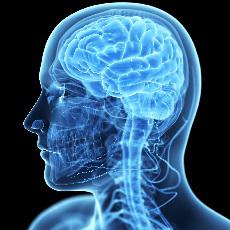
What is a stroke?
A stroke happens when there is a loss of blood flow to part of the brain. Your brain cells cannot get the oxygen and nutrients they need from blood, and they start to die within a few minutes. This can cause lasting brain damage, long-term disability, or even death.
If you think that you or someone else is having a stroke, call 911 right away. Immediate treatment may save someone's life and increase the chances for successful rehabilitation and recovery.
- Stroke (National Library of Medicine)What is a stroke? A stroke happens when there is a loss of blood flow to part of the brain. Your brain cells cannot get the oxygen ... that you or someone else is having a stroke, call 911 right away. Immediate treatment may save ...
- Ischemic Stroke (National Library of Medicine)What is an ischemic stroke? A stroke happens when there is a loss of blood flow to part of the brain. Your brain cells cannot get the oxygen and ... even death. There are two main types of strokes, ischemic and hemorrhagic. Ischemic stroke is the more ...
- Stroke Rehabilitation (National Library of Medicine)What is stroke rehabilitation? Stroke rehabilitation is a program for people who have had a stroke. A stroke happens when there is a loss of blood ... brain damage, long-term disability, or even death. Stroke rehabilitation can help you relearn skills you lost ...
- Hemorrhagic Stroke (National Library of Medicine)What is a hemorrhagic stroke? A stroke happens when there is a loss of blood flow to part of the brain. Your brain cells cannot get the oxygen and ... even death. There are two main types of strokes, ischemic and hemorrhagic. A hemorrhagic stroke is less ...
- Transient Ischemic Attack (National Library of Medicine)A transient ischemic attack (TIA) is a stroke that lasts only a few minutes. It happens when the blood supply to part of the brain is briefly blocked. Symptoms of a ...
- Heat Illness (National Library of Medicine)... raise your risk. Heat-related illnesses include: Heat stroke - a life-threatening illness in which body temperature ... is not treated, it can turn into heat stroke. Heat cramps - muscle pains or spasms that happen ...
- Mitochondrial encephalomyopathy, lactic acidosis, and stroke-like episodes (MELAS) is a condition that affects many of the body's systems, particularly the brain and ...
- You were in the hospital after having a stroke . A stroke happens when blood flow to part of the ... started treatment to help you recover from the stroke and prevent a future stroke. You may have ...
- A stroke occurs when blood flow to a part of the brain stops. A stroke is sometimes called a "brain attack." If blood ... Brain cells can die, causing lasting damage. A stroke can also occur if a blood vessel inside ...
- A stroke happens when blood flow to any part of the brain stops. Each person has a different recovery ... in the first weeks or months after a stroke. Some people will keep improving months or years ...



